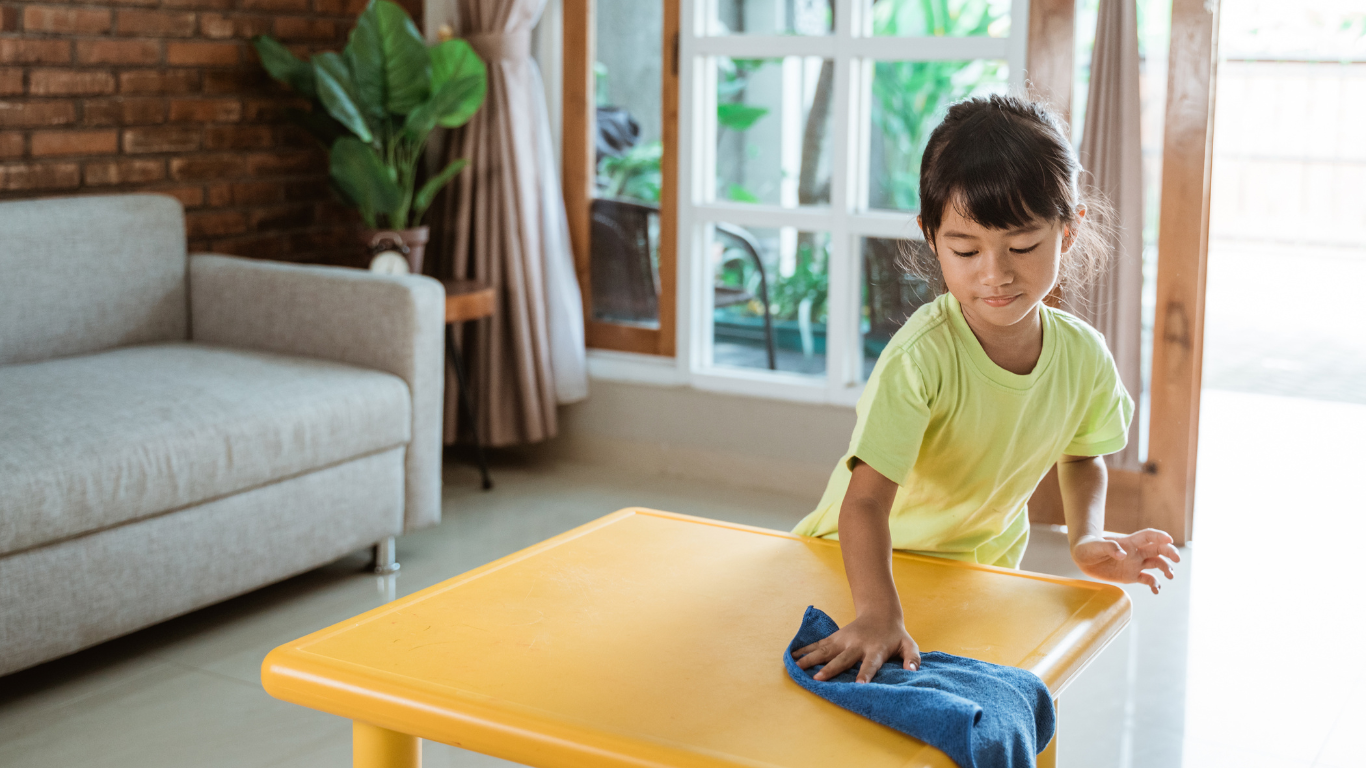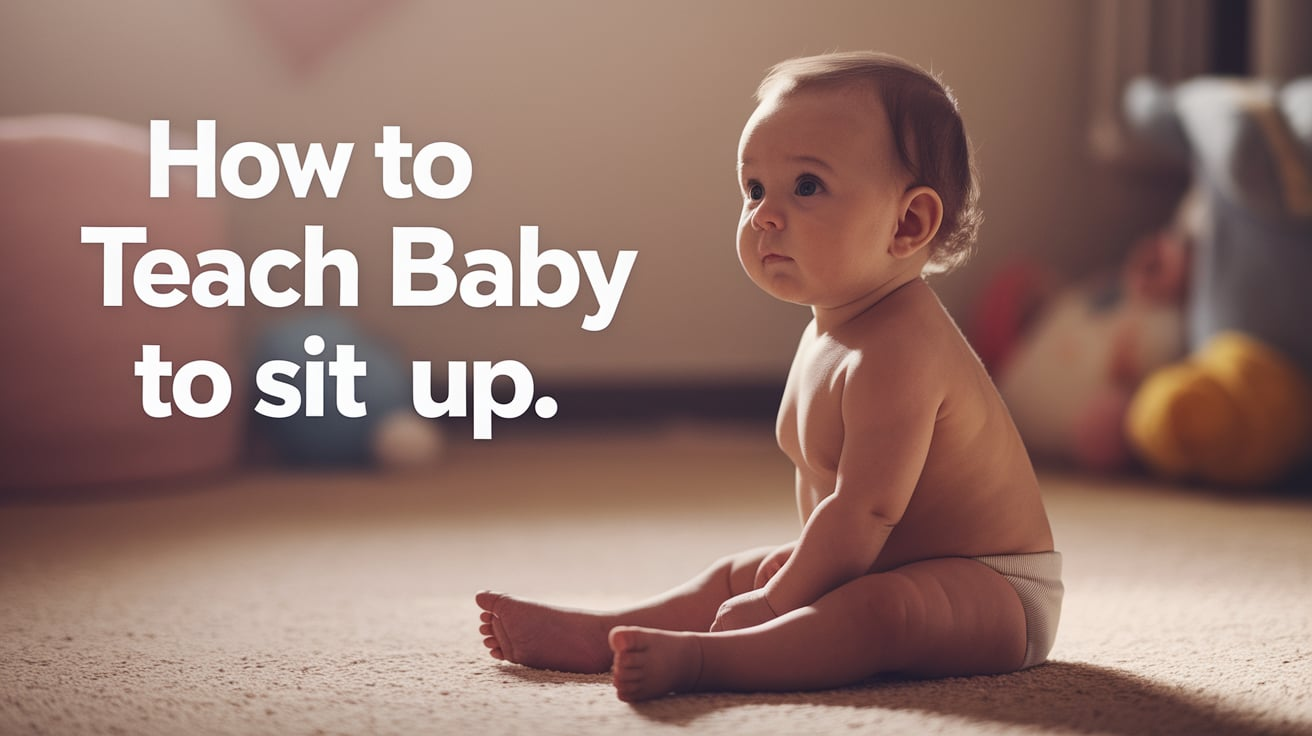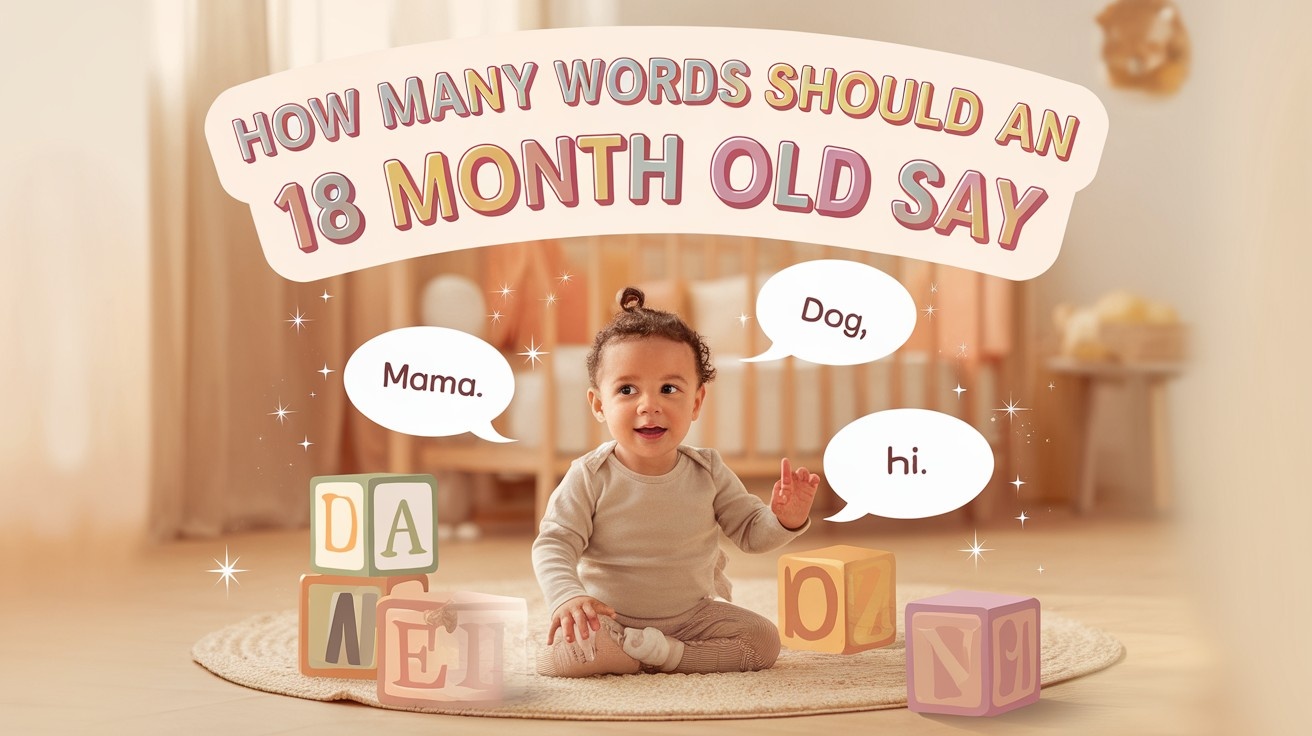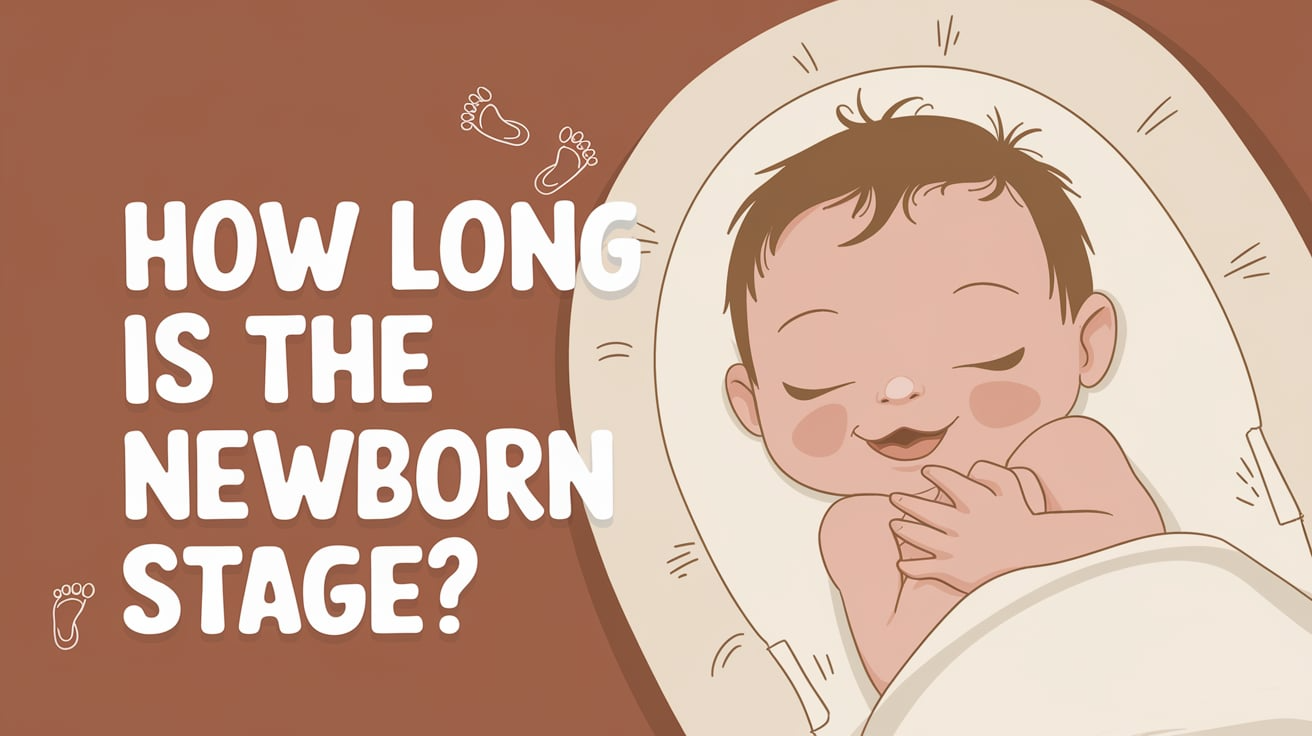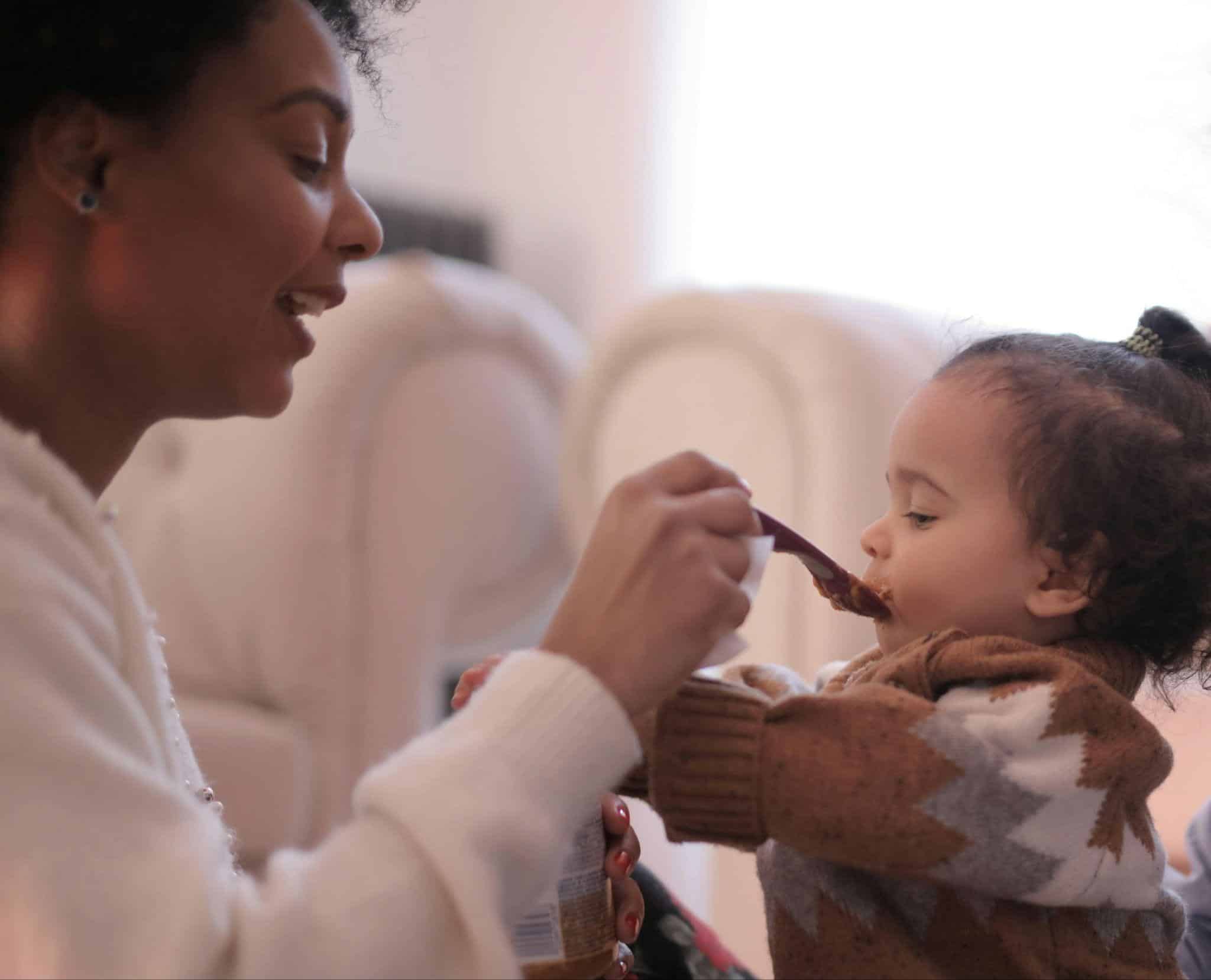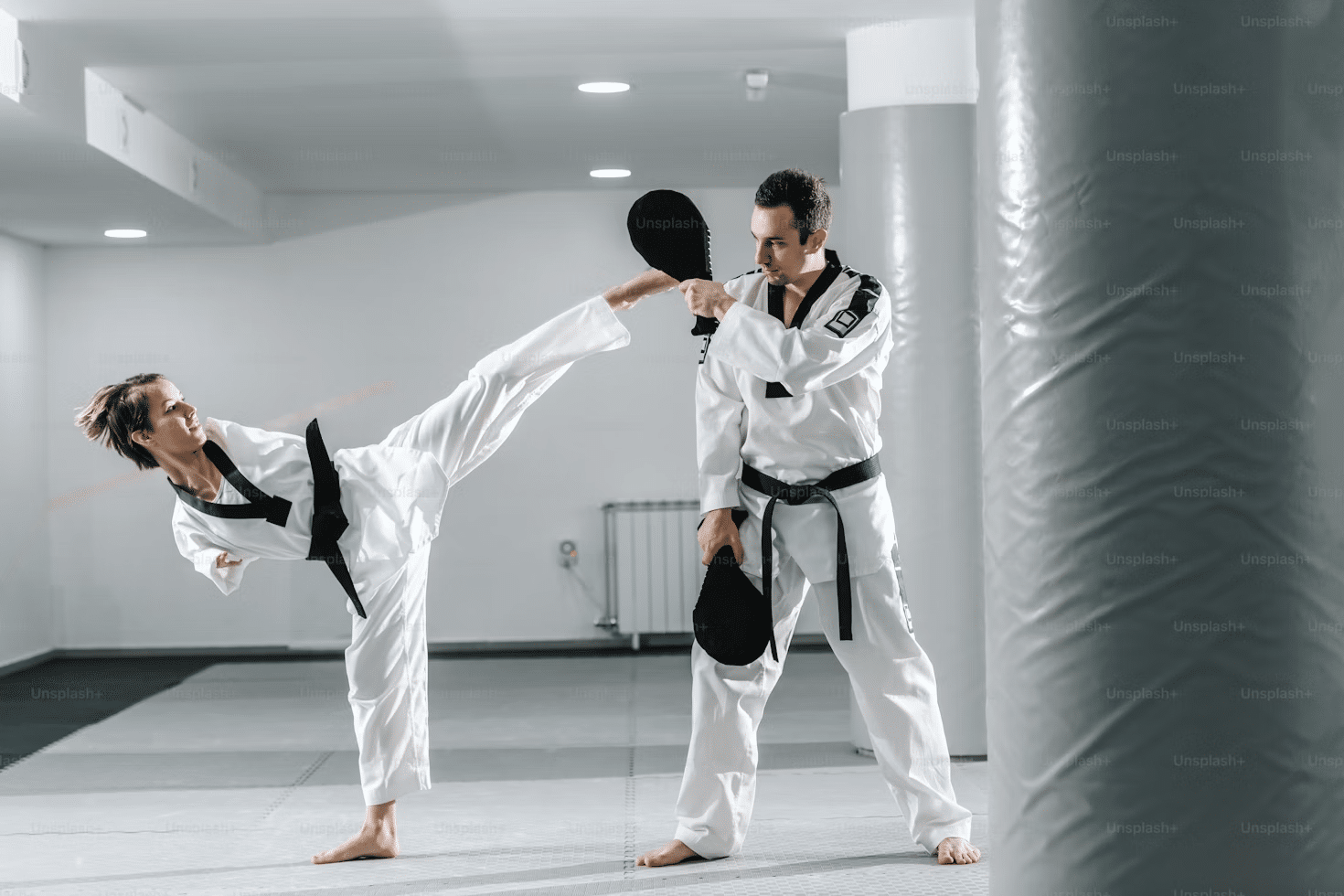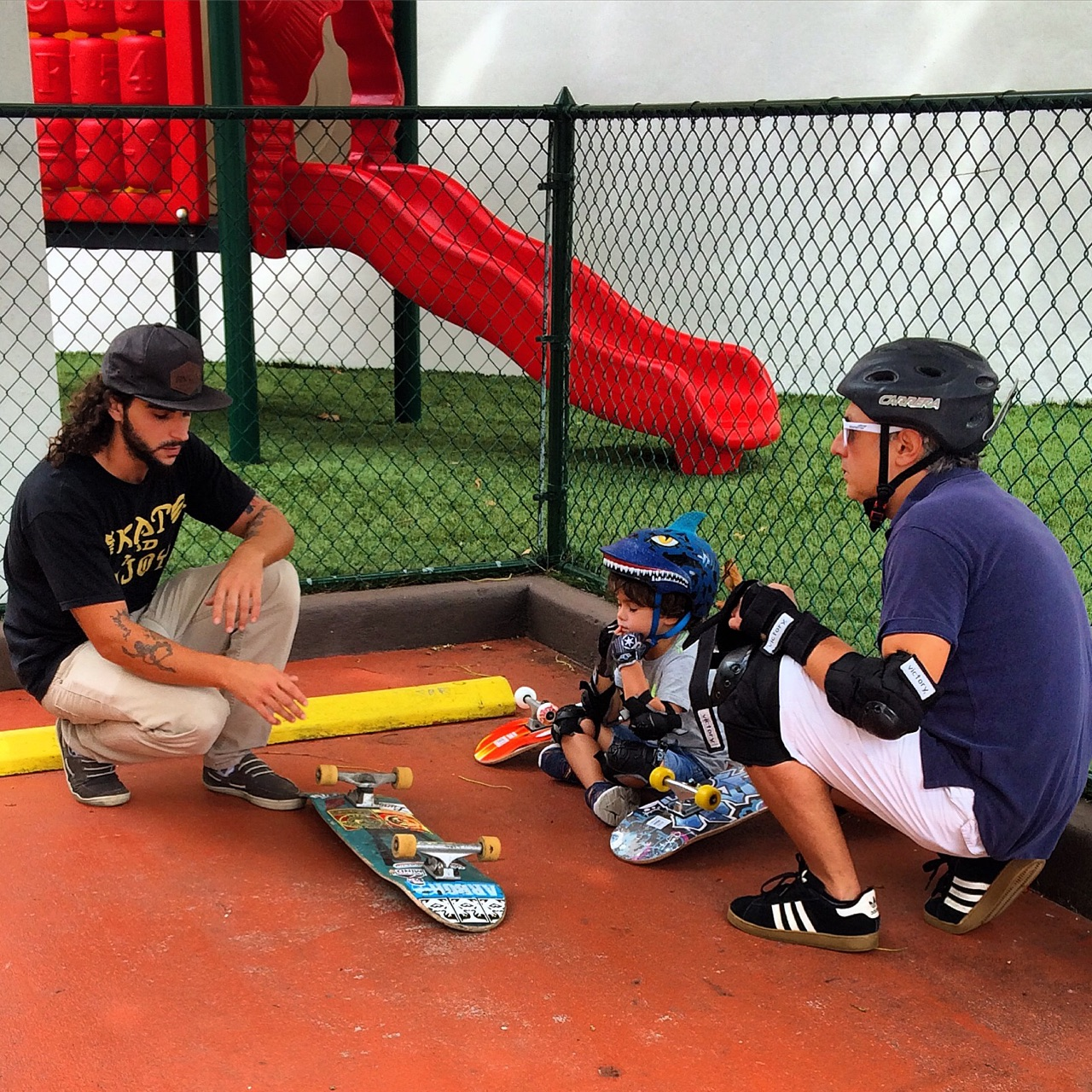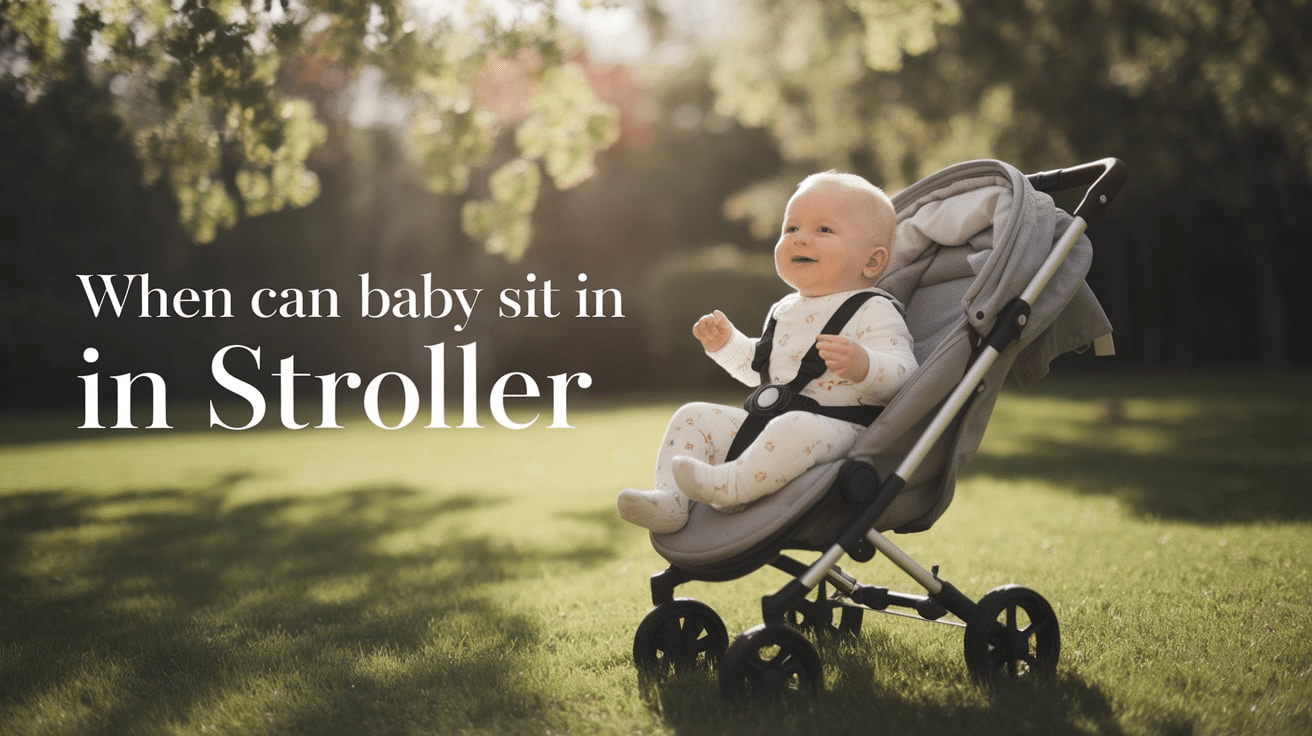
Watching your tiny bundle grow brings so many questions! One moment, they’re cradled in your arms, and before you know it, you’re wondering when those little bodies are ready for the exciting world of strollers.
Every parent eagerly waits for that magical milestone when a baby can sit upright and see the world from a new angle.
The trip from newborn to sitting-ready explorer happens in small steps, with muscles growing stronger each day. When can your baby graduate from lying flat to sitting proudly in a stroller?
Let’s explore this exciting time together, looking at development signs, safety tips, and how to know when your little one is truly ready for their “big kid” seat in the stroller world!
Understanding the Importance of Developmental Milestones
Why Baby Development Matters for Stroller Safety?
A baby’s developmental readiness is crucial for safely using a stroller in an upright position. Their physical development, particularly core strength and stability, directly impacts how safely they can be positioned in different stroller configurations.
Babies develop at varying rates, with each milestone representing important physical capabilities that contribute to their ability to sit safely.
Before these milestones are reached, a baby’s body isn’t equipped to handle the demands of sitting upright, which could potentially lead to discomfort or even injury.
The Role of Head and Neck Control in Stroller Use
Head and neck control is perhaps the most critical developmental milestone for stroller readiness. Without proper neck strength, babies cannot safely hold their heads up while sitting, putting them at risk for positional asphyxiation or head and neck injuries.
When a baby has yet to develop sufficient neck strength, its head may flop forward or to the side while in a stroller, potentially compromising its airway.
This is why pediatricians strongly emphasize waiting until a baby has consistent head control before transitioning them to more upright stroller positions.
The Right Stroller for Your Baby’s Age and Stage
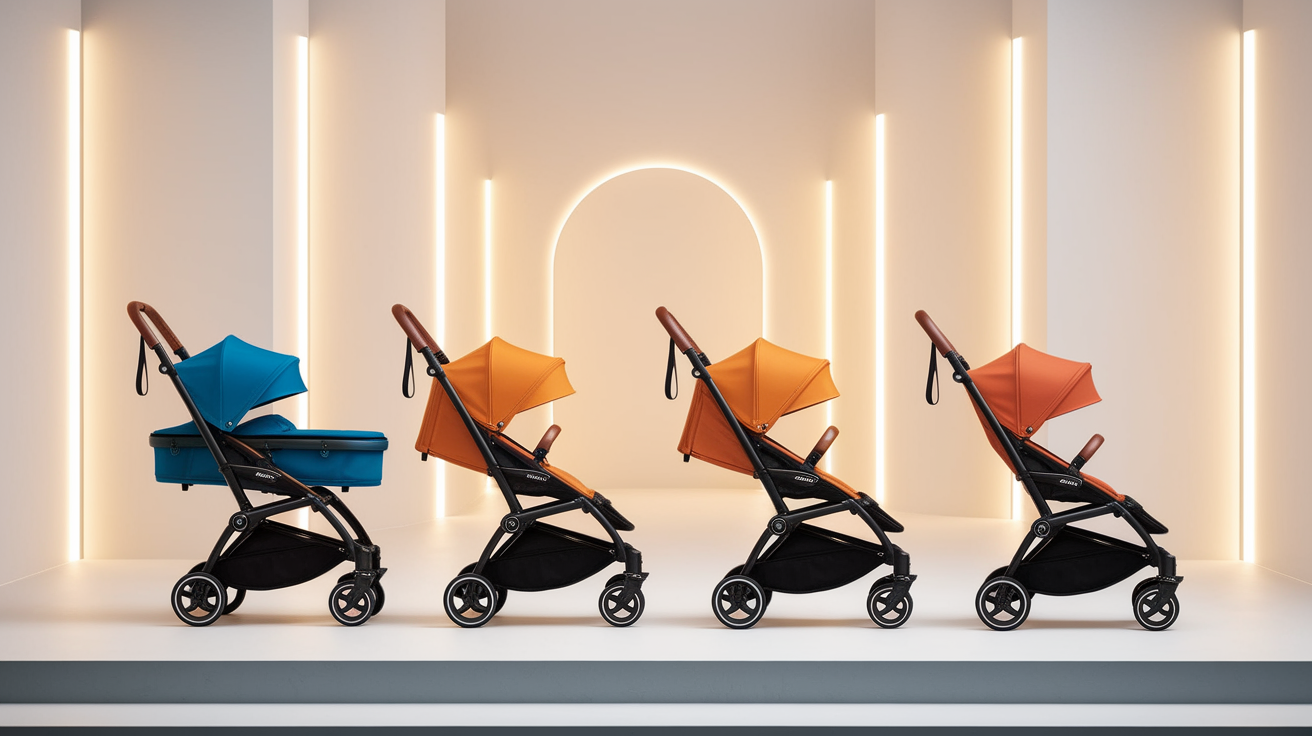
Newborn Strollers: Bassinets and Fully Reclining Seats
For newborns (0-3 months), the safest stroller options are:
- Bassinet attachments that allow the baby to lie completely flat
- Strollers with seats that recline to a fully flat position
- Car seat-compatible strollers with appropriate infant inserts
These options provide crucial full-body support for newborns whose spines are still developing their natural curves. The flat position helps maintain proper breathing patterns and reduces the risk of oxygen desaturation that can occur when newborns are placed in a seated position too early.
The Transition to a Sitting Position: What You Need to Know
As your baby develops strength, you’ll gradually transition them to more upright positions in the stroller:
- Start with a slightly reclined position once head control is consistent
- Gradually increase the incline as trunk strength develops
- Move to a fully upright position only when your baby can sit unassisted
Convertible or modular strollers are excellent investments as they adapt to your growing baby. Look for models with multiple recline positions to accommodate your baby through various developmental stages, from newborn to toddler.
When Can Your Baby Safely Sit in a Stroller?
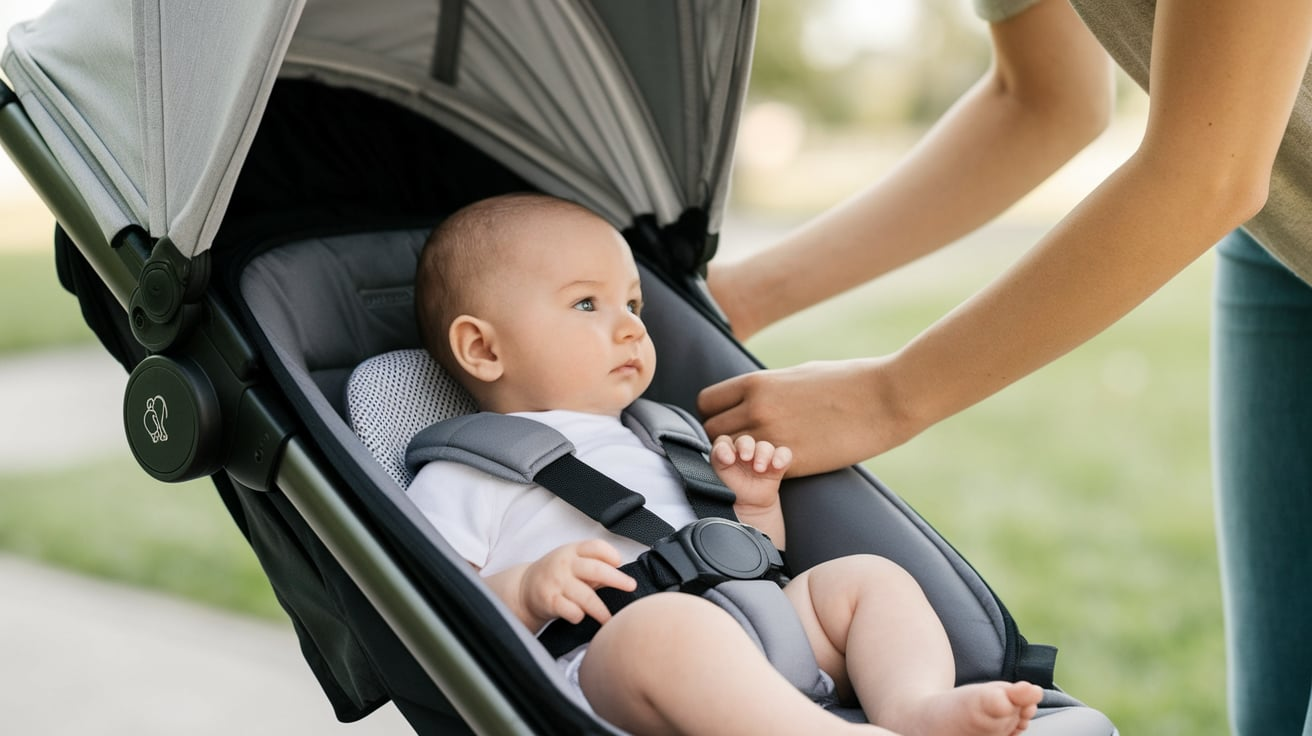
The Development of Head and Neck Control: A Key Milestone
Head and neck control typically develops between 3 to 6 months of age. This crucial milestone happens in stages:
- 1-2 months: Brief head lifting during tummy time
- 3-4 months: Holding head steady while being held upright
- 4-6 months: Strong, consistent head control in various positions
Once your baby can hold their head steadily without support for extended periods (usually around 4-5 months), they may be ready for a slightly reclined stroller position. However, full upright sitting usually requires additional trunk strength development.
Transitioning to a Fully Upright Stroller Seat: What to Expect
Most babies are ready for a fully upright stroller seat between 5-7 months of age. Key signs of readiness include:
- Consistent head and neck control without bobbing or drooping
- Beginning to sit independently, even if for short periods
- Strong core muscles demonstrated by the ability to hold an upright position
- Interest in seeing the surroundings and sitting up during other activities
Remember that sitting in a stroller with support is different from independent sitting on the floor. The stroller provides additional back support, but your baby should still have enough strength to maintain good posture.
Typical Ages for Sitting in a Stroller: 6 Months and Beyond
The general timeline for stroller positions by age:
- 0-3 months: Fully flat bassinet or maximum recline position
- 3-5 months: A slightly reclined position as head control develops
- 5-7 months: More upright position with good support
- 6+ months: Fully upright position once independent sitting is established
Individual development varies significantly, so some babies may be ready earlier while others need more time. Always prioritize your baby’s specific developmental progress over average age guidelines.
Choosing the Best Stroller for Your Growing Baby
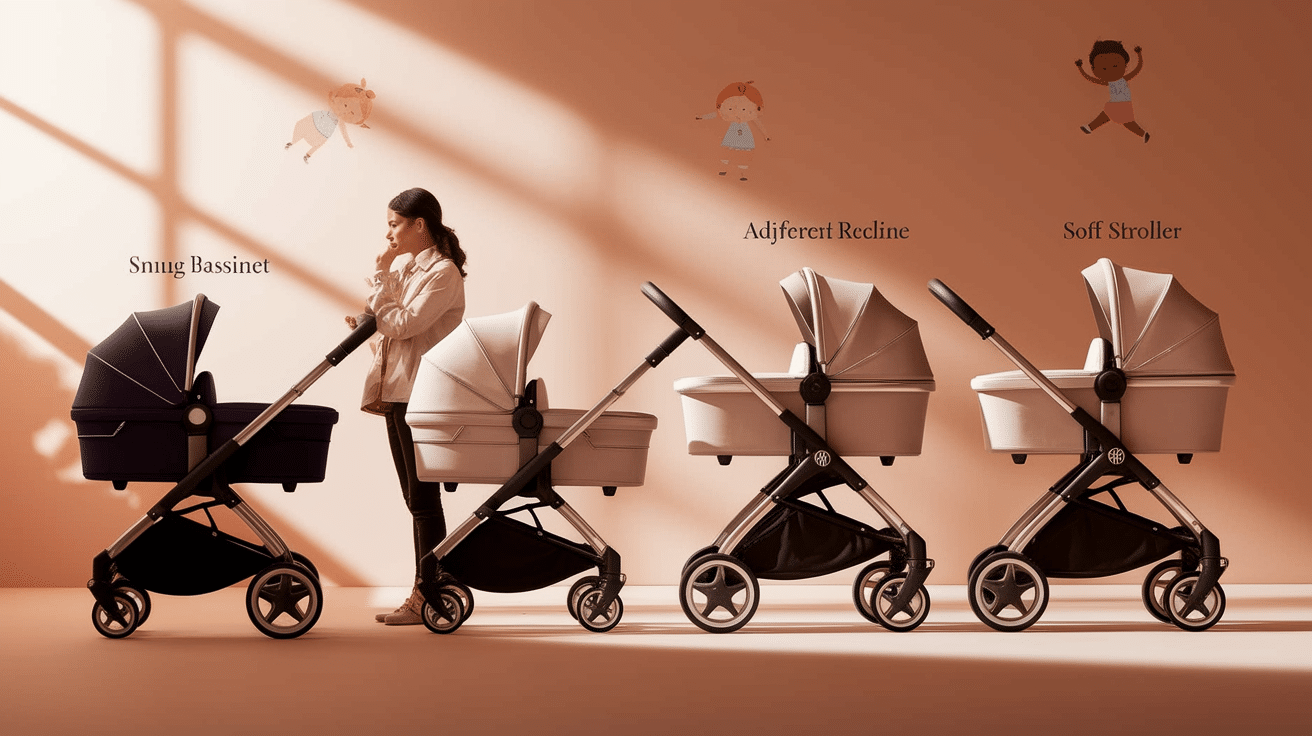
Strollers for Newborns: Features to Look For
When selecting a stroller for a newborn, prioritize these features:
- Full recline capability (180 degrees) or bassinet attachment
- Adequate head support and cushioning
- 5-point safety harness that fits snugly even on small babies
- Good suspension system for smooth rides
- Adjustable handlebar heights for parent comfort
Recommended newborn-friendly stroller types include travel systems with compatible infant car seats, bassinet strollers, and convertible models with lay-flat capabilities.
Modular Strollers: Flexibility for Different Stages
Modular or convertible strollers offer excellent value through their adaptability:
- Can switch between parent-facing and world-facing orientations
- Accommodate car seats, bassinets, and toddler seats on the same frame
- Adjustable handlebar heights and seating positions
- Grow with your child from newborn to toddler years
These versatile strollers allow babies to face parents during early months when social connection is crucial, then transition to forward-facing as curiosity about the environment increases around 6-12 months.
Protecting Your Baby on Wheels!
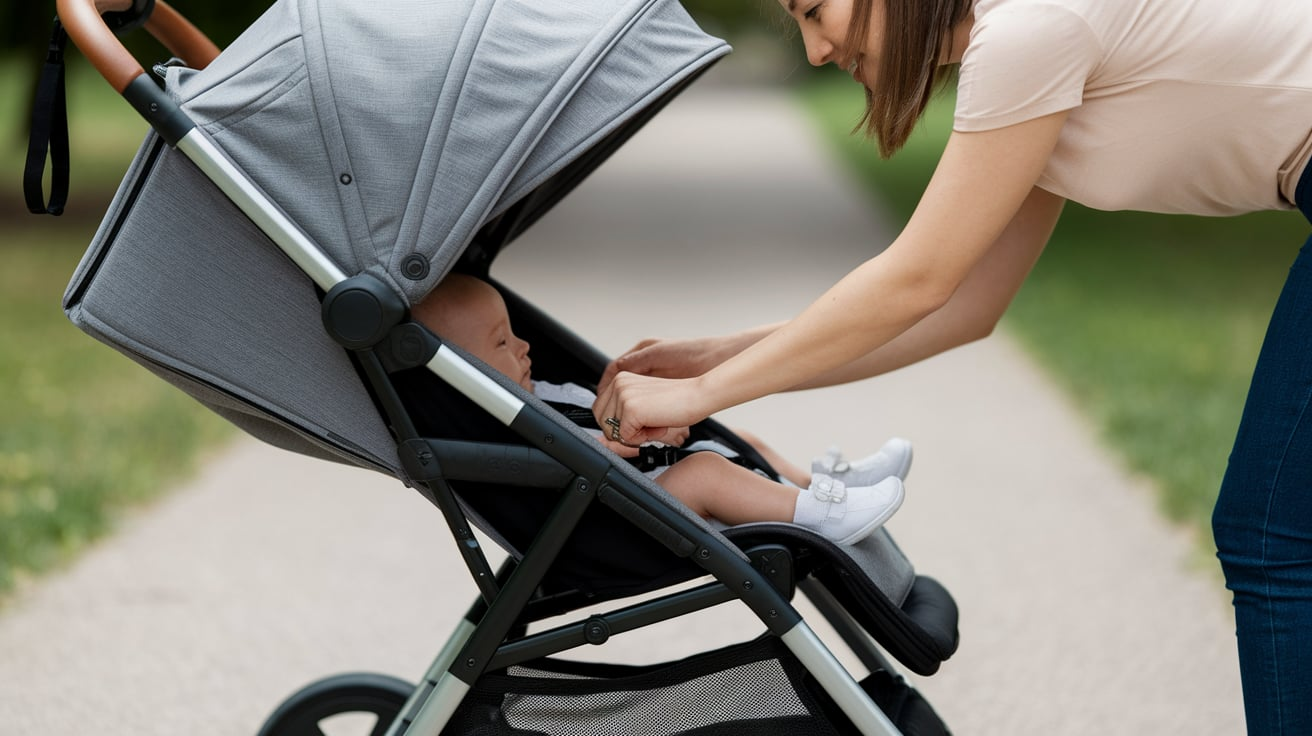
Proper Harnessing and Secure Seating
Always ensure your baby is properly secured in the stroller:
- Use all harness straps, including shoulder, waist, and crotch straps
- Adjust straps to fit snugly but not too tight (you should be able to fit two fingers between the strap and your baby)
- Position the chest clip at the armpit level
- Check that the baby cannot slump or slide down in the seat
- Regularly inspect straps for signs of wear or damage
For younger babies who are just transitioning to sitting positions, consider using rolled towels or manufacturer-approved infant inserts to provide additional support on either side of the body.
The Importance of Adjusting Recline and Support
Proper stroller adjustment is crucial for safety and comfort:
- For babies with developing head control, maintain a recline that prevents the head from falling forward
- As sitting skills develop, gradually make the seat more upright
- Always adjust the recline before placing your baby in the stroller
- For nap times, recline the seat to a comfortable sleeping position
- Ensure the recline mechanism locks securely in place
Regularly reassess your baby’s comfort in the current position as they grow and develop stronger sitting abilities.
Stroller Safety Features to Ensure Your Baby’s Comfort and Protection
Beyond proper positioning, these safety features protect your baby:
- A reliable braking system that locks both wheels
- Sturdy frame that doesn’t wobble or tip easily
- Five-point harness system with secure buckles
- Adequate ventilation and sun protection
- Smooth-rolling wheels with good suspension
- Hand safety strap for the parent
- Pinch guards to protect little fingers
Always engage the brake when the stroller is stationary, even on flat surfaces, and never leave your baby unattended in a stroller.
Strollers for Older Babies: Safety and Comfort Considerations
As your baby grows and can sit upright, look for these features:
- Multi-position recline settings for naps and comfort
- Sturdy, supportive seat with good back support
- Padded, adjustable 5-point harness that grows with your child
- Adequate legroom and footrests
- Sun canopy with UV protection
- Snack tray or belly bar for additional support and entertainment
Jogging strollers and lightweight models become more practical once your baby has full sitting abilities, typically around 6-8 months.
Encouraging Your Baby’s Motor Skill Development
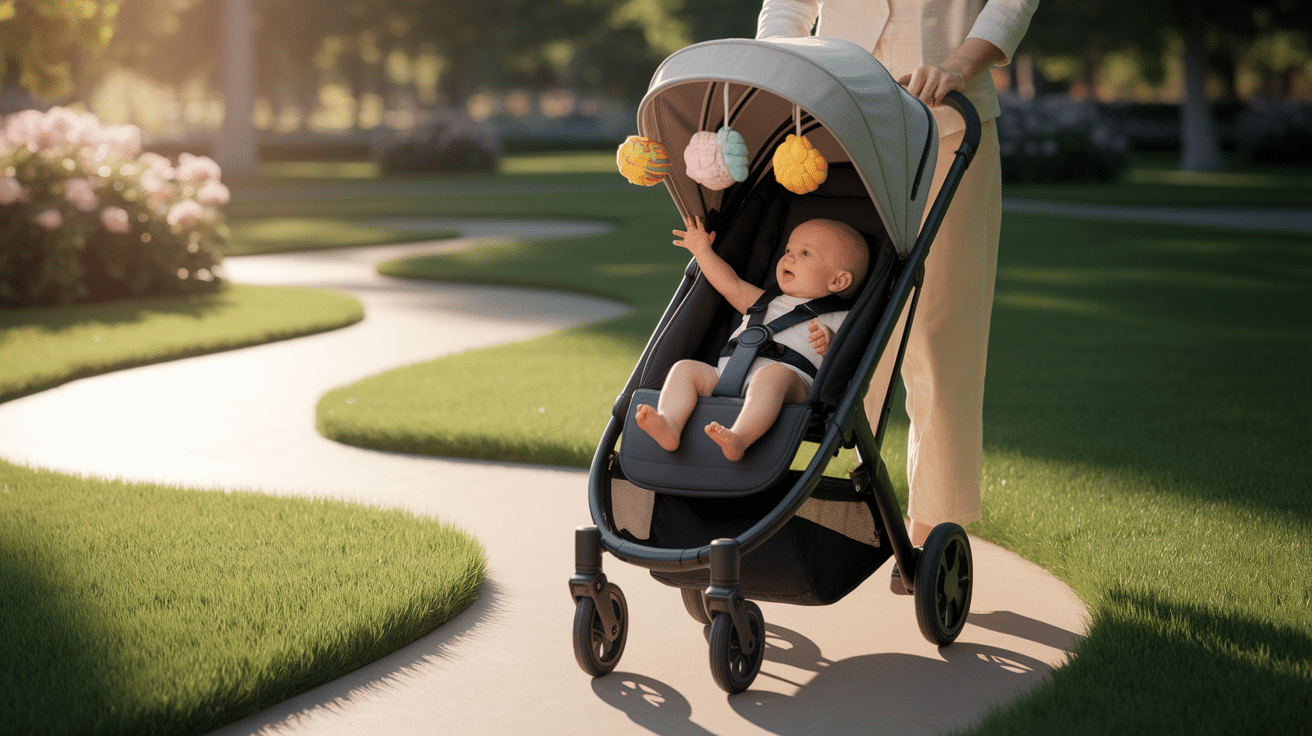
The Benefits of Tummy Time
Tummy time is essential for developing the strength needed for sitting:
- Strengthens neck, shoulder, and core muscles required for sitting
- Helps prevent flat spots on the back of the head
- Encourages reaching and pushing up, building upper body strength
- Promotes motor development and spatial awareness
- Prepares babies for crawling and other mobility milestones
Start with short sessions (3-5 minutes) several times daily from the newborn stage, gradually increasing the duration as your baby builds strength and tolerance.
How to Help Your Baby Build Strength for Sitting Up?
Support your baby’s path to independent sitting with these activities:
- Assisted sitting with support behind the back and around the hips
- Gentle pull-to-sit exercises (holding baby’s hands and slowly bringing them to a sitting position)
- Side-lying play to strengthen side core muscles
- Supported standing to build leg and core strength
- Baby-safe sit-up toys that encourage reaching and balance
Remember that consistent, short practice sessions throughout the day are more effective than occasional longer sessions. Make these activities fun and stop before your baby becomes frustrated.
Consulting Your Pediatrician for Personalized Advice
While developmental guidelines are helpful, your pediatrician can provide advice specific to your baby:
- Discuss any concerns about your baby’s motor development
- Get guidance if your baby is premature or has any medical conditions
- Ask about athe ppropriate timing for stroller transitions during regular check-ups
- Seek advice on exercises to strengthen your baby’s muscles
- Request evaluation if you notice developmental delays
Your pediatrician can help determine if your baby is physically ready for more upright positioning and can suggest alternatives if needed.
Making the Transition: Trusting Your Baby’s Readiness
Your baby’s individual development should guide the transition to sitting in a stroller:
- Watch for natural cues that your baby wants to sit more upright
- Begin with short periods in the new position, watching for signs of fatigue
- Return to a more reclined position if your baby seems uncomfortable
- Celebrate progress but don’t rush development
- Trust your parental instincts about your baby’s readiness
Remember that developmental milestones represent ranges, not deadlines. Your baby will show you when it’s ready for more upright positioning through increasing strength, stability, and interest in seeing the world from a new perspective.
Final Thoughts
The path to sitting in a stroller marks a special chapter in your baby’s story. When your little one shows strong neck control, sits with minimal help, and seems curious about the world around them, they’re telling you they might be ready for this new experience.
Remember, each baby follows its timeline—some are confident at six months, while others need a bit more time. Trust your instincts and watch for your baby’s cues.
Stroller travel is about more than just sitting up—it’s about discovering the world from a new point of view.
As you push that stroller forward, you’re not just giving baby a ride—you’re opening doors to exciting new experiences that will shape their growing world!



